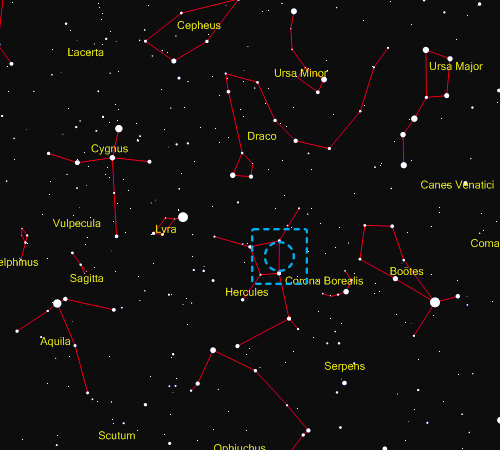This is a new version of an image I took originally in 2014. Hopefully the resolution is improved and the colour is better, but you be the judge of that!
The Great Hercules Cluster, M13, is the brightest globular cluster in the northern sky. It comprises around 300,000 stars, fewer than M3's 500,000, though it appears brighter and more densely populated as it is some 9,000 light years closer to us. The cluster is almost 12 billion years old and is composed mainly of red giant stars, though as you can see, there are many blue giants visible too. Its mass is around 500,000 solar masses (1 x 1036 kg).
In 1974, the Arecibo Observatory in Puerto Rico beamed a radio message at M13, signalling that there is intelligent life on Earth. This message will not reach its intended recipients, if indeed there are any, for twenty five thousand years. Now, while the cluster will move through space during the transit time, the proper motion is small enough that the cluster will only move 24 light years, only a fraction of the diameter of the cluster. Thus, the message will still arrive near the centre of the cluster.
To an observer located near the heart of M13, the sky would appear in constant daylight as the stars are packed so tightly, with over a hundred in a three-light-year radius. For contrast, the nearest star to our Sun, Alpha Centauri, is four light years away. Such beings might never have considered the great expanse of the universe we know, it being always hidden from sight.
An interesting feature that you might just make out in the cluster is ‘The Propeller’, a dark Y shaped feature created by three small dark dust lanes. Look carefully in the area at about 4 o’clock just outside the bright core. This feature was first observed by Bindon Stoney in the 1850s from Birr Castle in Ireland, using the famous 72-inch reflector. |


